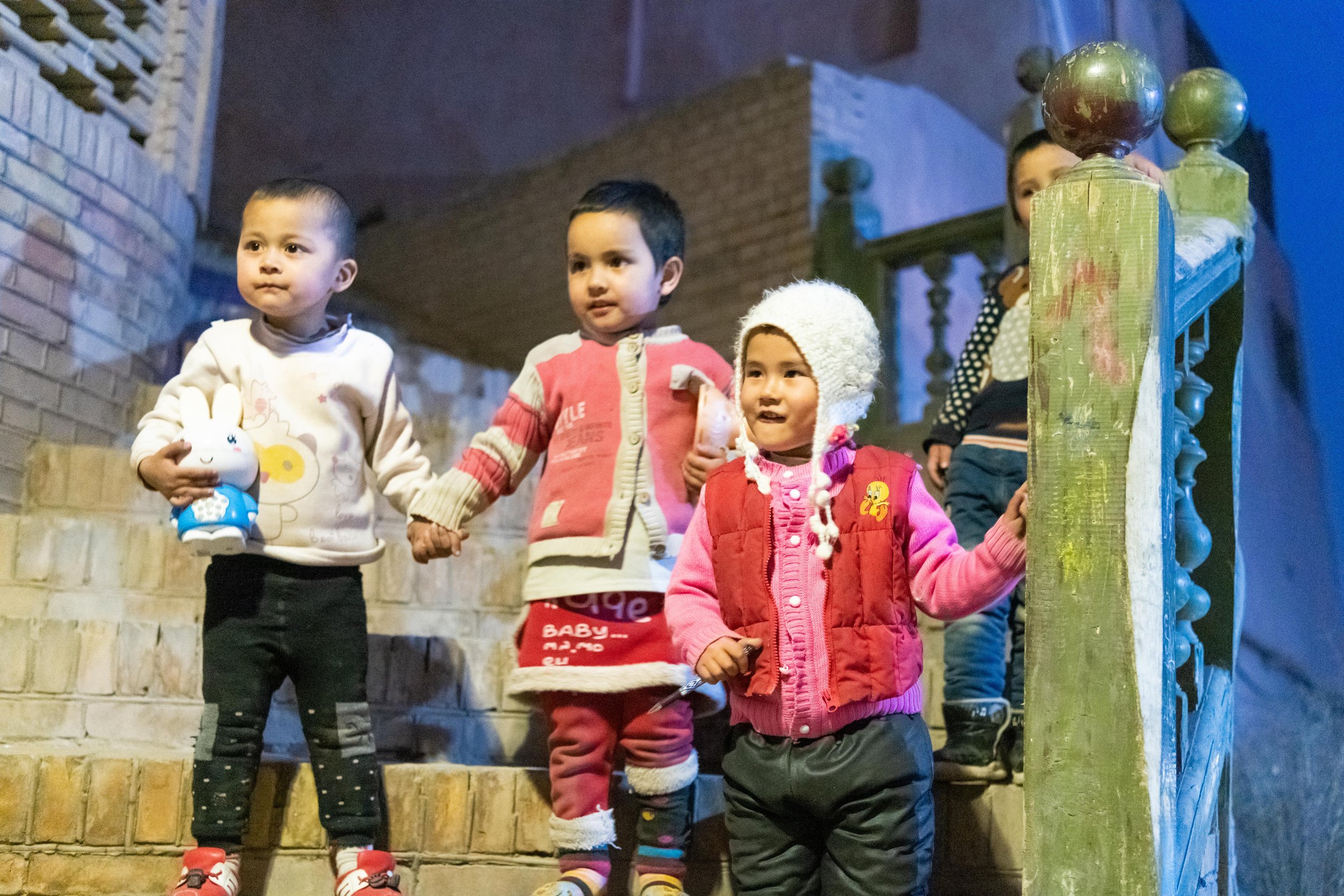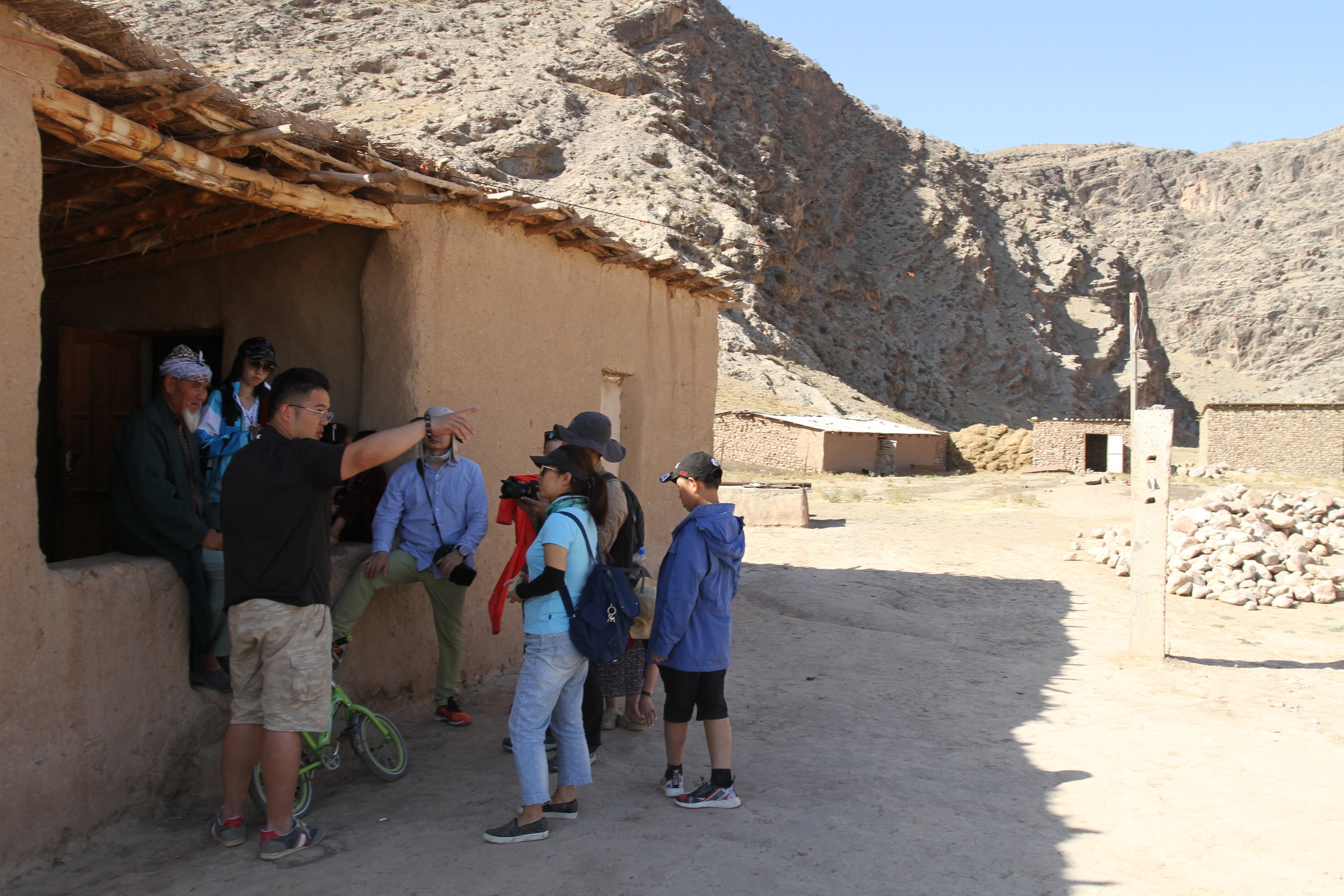2021 On The Road-The Silk Road Project 04/02/2021
Abstract: The Silk Road, referred to as the Silk Road for short, generally refers to the land Silk Road, which is broadly divided into land Silk Road and Maritime Silk Road. The land Silk Road originated in the Western Han Dynasty (202-8 BC). In this projects, scholars from Xinjiang University and Give Your Hand Organazation are going to examine the cultural impacts based on the Silk Road.
月牙泉保护公益活动-Public Welfare Activity On The Crescent Lakeat DunHuang 10/12/2020
Abstract: Sponsored by the Millennium Dunhuang special fund of China Cultural Heritage Foundation and undertaken by YueYaQuan Town, Dunhuang, the public welfare research activity - "Millennium Dunhuang · silent protection" came to a perfect end. The event was planned by Give Your Hand Org and Xijiang University to preserve the local habitatation deterioration and cultural loss.

Lecturing at Mogao Grottoes 莫高文化学堂 03/18/2020
Abstract: Students and Parents were joined to the Mogao public letures event. The event introduces the construction of Dunhuang Grottoes and its historical process, the long history of Dunhuang, the local influential aristocratic families and surnames, and the relationship between Dunhuang and the surrounding nationalities and the western regions are not or rarely recorded in history.
Mogao Grottoes Project 11/30/2019
莫高窟开凿于敦煌城东南25公里的鸣沙山东麓的崖壁上,前临宕泉,东向祁连山支脉三危山。南北全长1680米,现存历代营建的洞窟共735个,分布于高15~30多米高的断崖上,上下分布1~4层不等。分为南、北两区,其中南区是礼佛活动的场所,各个朝代壁画和彩塑的洞窟492个,彩塑2400多身,壁画4.5万多平方米,唐宋时代木构窟檐五座,还有民国初重修的作为莫高窟标志的九层楼。莲花柱石和舍利塔20余座,铺地花砖2万多块。北区的243个洞窟(另有5个洞窟已编入北区492个号中),是僧侣修行、居住、瘗埋的场所,内有修行和生活设施土炕、灶坑、烟道、壁龛、灯台等,但多无彩塑和壁画。
莫高窟各窟均是洞窟建筑、彩塑、绘画三位一体的综合性艺术。洞窟最大者200多平方米,最小者不足1平方米。洞窟形制主要有禅窟、中心塔柱窟、佛龛窟、佛坛窟、涅槃窟、七佛窟、大像窟等。塑绘结合的彩塑内容主要有佛、菩萨、弟子、天王、力士像等。彩塑形式有圆塑、浮塑、影塑、善业泥等。圆雕、浮雕除第96、130窟两尊大佛,第148、158两大卧佛为石胎泥塑外,其余均为木骨泥塑。佛像居中心,两侧侍立弟子、菩萨、天王、力士,少则3身,多则11身。以第96窟35.6米的弥勒坐像为最高,小则10余厘米
敦煌文化-Culture at Dunhuang
03/01/2019
Abstract: On May 26 of the lunar calendar in 1900, a memorable day, this scripture cave was found in Dunhuang Mogao Grottoes. Those ancient documents filled the whole grottoes. There are more than 50000 documents unearthed from the Sutra cave, of which about 90% are Buddhist classics, as well as classics of Taoism, Manichaeism, Jingjiao and other religions, as well as a large number of secular documents such as official documents, four books, socio-economic documents and literary works. In addition to a large number of Chinese scriptures, there are also Tibetan, Xixia, Khotan, Sanskrit, Uighur, Sute, Turkic, Kucha, Brahman riddle, Hebrew and other ancient scripts.
Give Your Hand summer programs 04/01/2018
Sponsored by SMGFDF, Xinjiang No.1 University, Give Your Hand.
Abstract: Thanks to the unremitting efforts of give your hand and the development of the summer project, we have successfully opened the sister project - "academic assistance plan" for poor children in Xinjiang. In this plan, we have provided economic and educational assistance from basic education to universities to some poor children in this area, so that they can complete their dreams and change their lives. If you are interested in joining us, please contact zuochunxi308@163.com

Fund Raising by Xinjiang University,and Give your hand organization. 03/03/2018
“Are you coming again tomorrow?"-Ajayi
Urumchi, Xinjiang 12/10/2017
Abstract: Due to its special geographical location and the singleness of regional economic form, Xinjiang is bound to actively develop economic and cultural exchanges with its surrounding areas, especially with the Central Plains. The "Silk Road", which appeared to meet the requirements of people's contact between the East and the west, was generally formed in the spring and Autumn period and the Warring States period, and some of its sections passed through Xinjiang.





